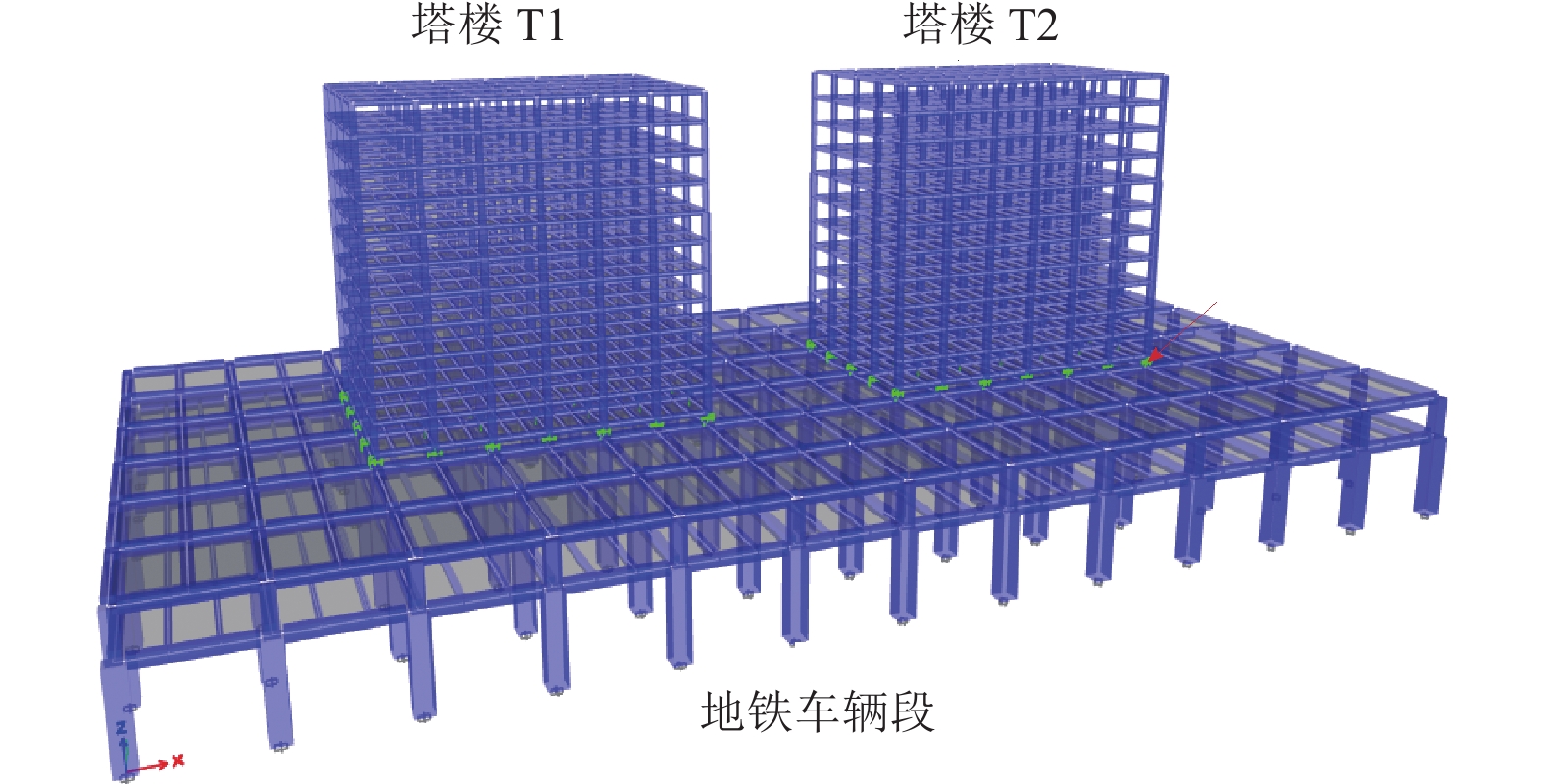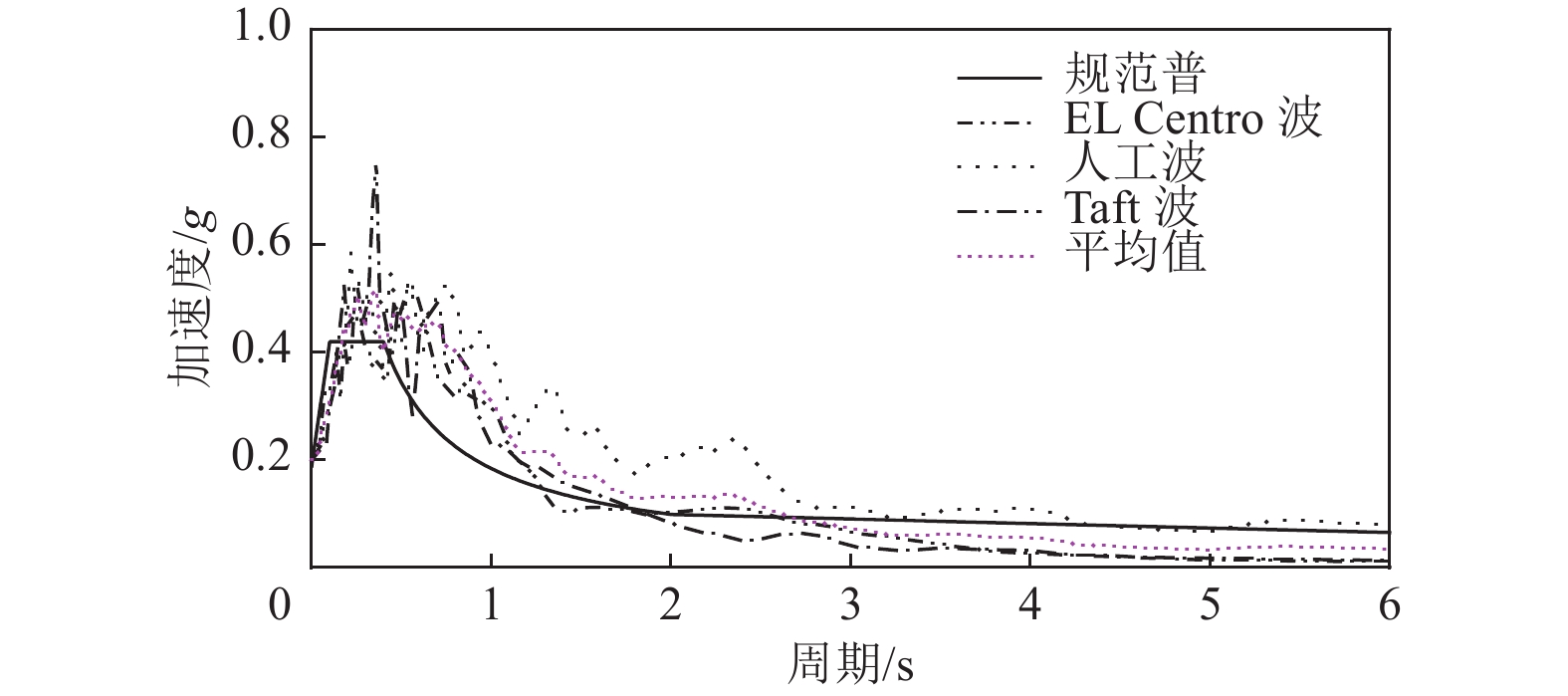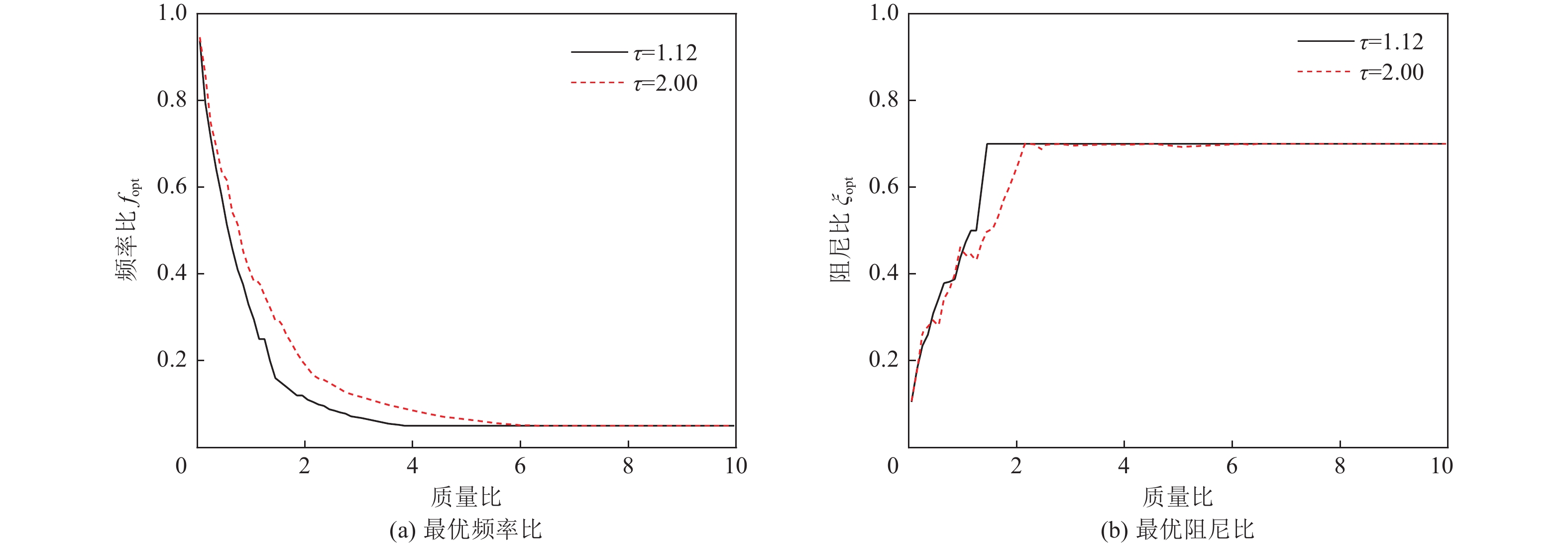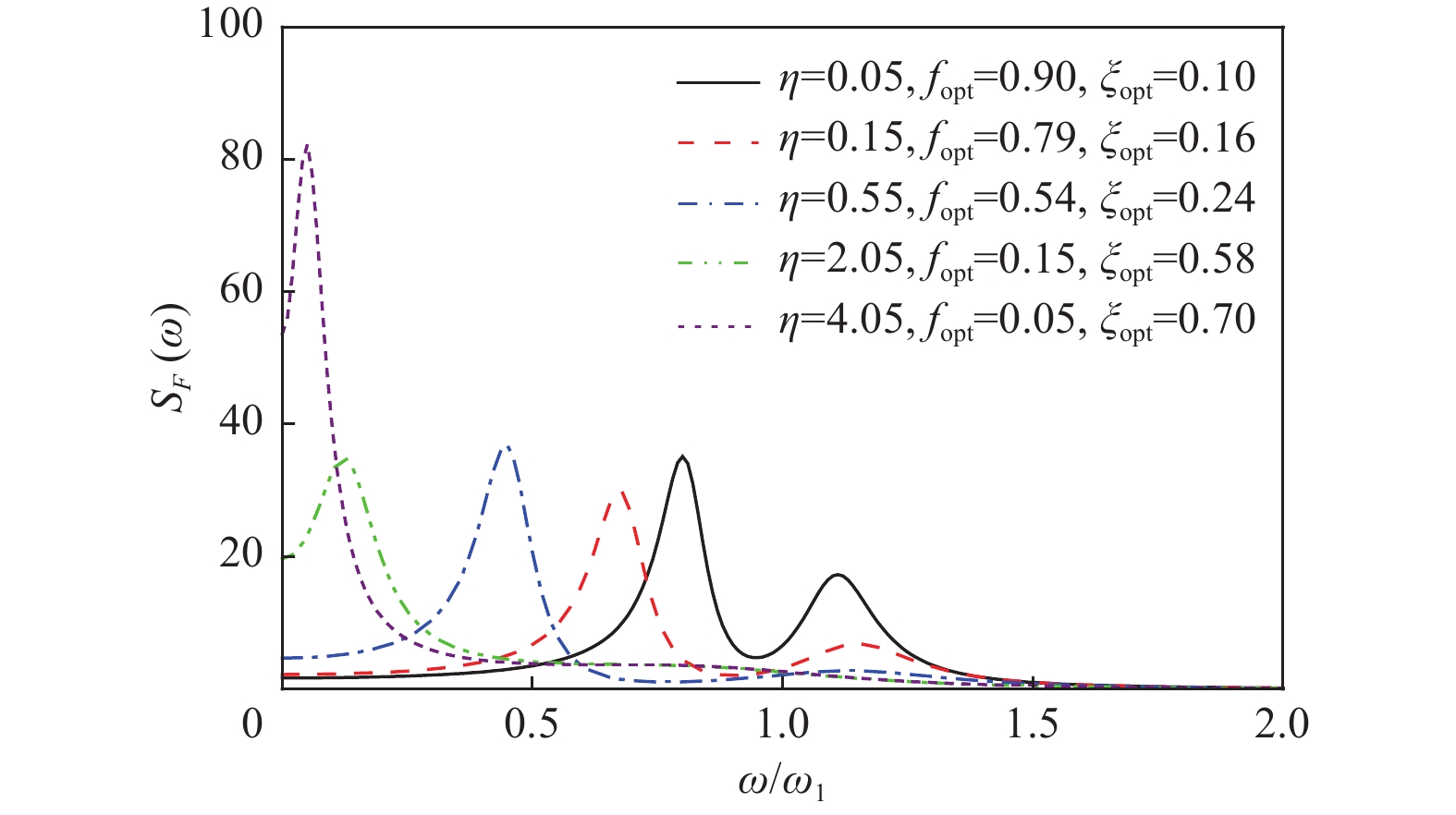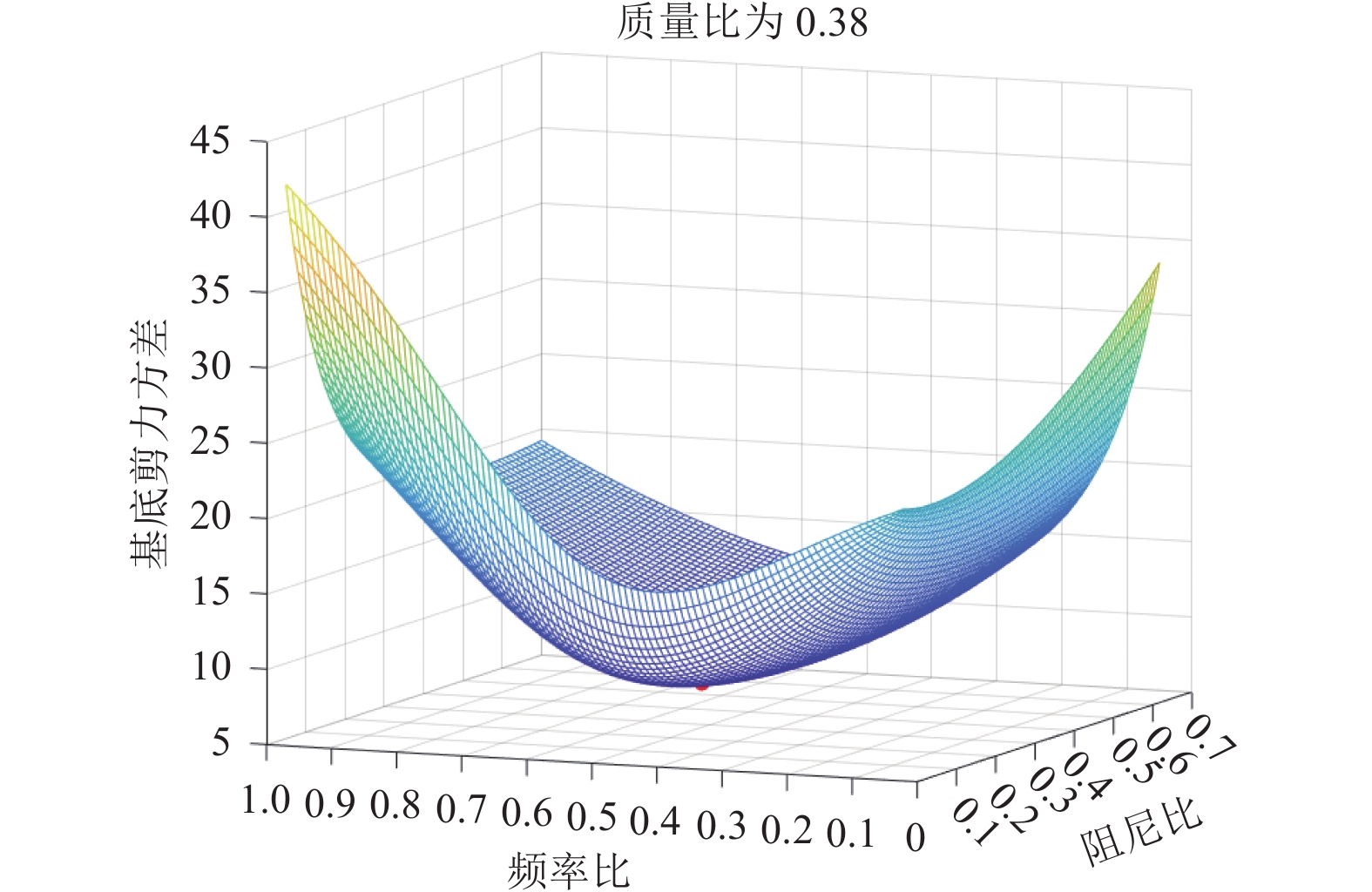Parameters Optimization for Seismic Isolation Layer in Double-tower Structure on Vehicle Depot Upper-cover
-
摘要: 城市大平台建筑上盖结构隔震技术设计受到广泛关注,有必要进一步研究这类结构体系的隔震技术原理并对其隔震参数进行优化。本文以车辆基地上盖隔震双塔结构为研究对象,首先基于振型叠加理论建立了结构简化计算模型,采用随机振动分析方法,建立了上盖塔楼结构加速度响应及基底剪力均方值显示表达式;其次,利用遗传算法,提出了以结构响应最小为优化目标的隔震层刚度和阻尼比优化设计方法;最后,采用MATLAB开展了车辆基地上盖隔震双塔结构隔震层参数优化分析,得到了隔震层的优化设计参数。研究结果表明,考虑下部结构一阶振型参与系数的简化模型可保守计算结构的基底剪力响应;当以上部结构绝对加速度响应最小为优化目标时,体系最优频率比取最小值0.05,隔震层阻尼比取值在0.3~0.5;当以体系基底剪力方差最小为优化目标时,随体系质量比的增加,体系最优频率比取值逐渐减小,隔震层阻尼比取值逐渐增大。实际工程结构设计中建议采用多目标优化设计方法。Abstract: Seismic isolation technology for the upper cover structure of large urban platform buildings has garnered significant attention. To enhance this technology, it is essential to further investigate the seismic isolation mechanisms of such structural systems and optimize their parameters. This study focuses on an isolated double-tower structure on a vehicle depot upper cover as the research object. A simplified calculation model of the structure was first established based on mode superposition theory. Using random vibration analysis, expressions were derived for the acceleration response of the upper tower structure and the root mean square value of the base shear force. Next, an optimization method for the isolation layer’s stiffness and damping ratio was proposed, aiming to minimize structural responses through the use of a genetic algorithm. Finally, MATLAB was employed to conduct the optimization analysis of the isolation layer parameters for a practical double-tower structure on a vehicle depot upper cover, leading to the determination of optimal isolation layer design parameters. The results show that the simplified model, which accounts for the participation coefficient of the first-order mode of the lower structure, can conservatively estimate the base shear response of the system. When minimizing the absolute acceleration response of the upper structure, the optimal frequency ratio is found to be 0.05, with the damping ratio of the isolation layer ranging between 0.3 and 0.5. When the objective is to minimize the variance of the base shear at the system level, the optimal frequency ratio decreases and the damping ratio increases as the system’s mass ratio increases. The study recommends using a multi-objective optimization approach for practical engineering structural design.
-
表 1 楼层质量和刚度分布
Table 1. Distribution of story mass and stiffness
结构 楼层 质量/kg x方向刚度/(kN·m−1) y方向刚度/(kN·m−1) 下部结构 1 2.564×107 18.9×106 21.6×106 2 2.033×107 19.6×106 23.7×106 T1塔楼 4 0.102×107 1.57×106 2.07×106 5 0.102×107 1.18×106 1.57×106 6 0.102×107 1.06×106 1.43×106 7 0.102×107 1.02×106 1.38×106 8 0.102×107 0.99×106 1.34×106 9 0.102×107 0.97×106 1.30×106 10 0.098×107 0.92×106 1.23×106 11 0.094×107 0.77×106 0.97×106 12 0.094×107 0.77×106 0.93×106 13 0.094×107 0.73×106 0.84×106 14 0.089×107 0.58×106 0.62×106 表 2 简化三质点系模型计算参数
Table 2. Computation parameters of simplified three lumped mass model
质量/kg 刚度/(kN·m−1) 阻尼系数/(kN·s·m−1) m1 m2 m3 $ k_{{\mathrm{eq}}}^{} $ $ k_{{\text{ur}}}^{\text{b}} $ $ k_{{\text{ul}}}^{\text{b}} $ $ c_{{\mathrm{eq}}}^{} $ $ c_{{\mathrm{ur}}}^{\mathrm{b}} $ $ c_{{\text{ul}}}^{\text{b}} $ 3.13×107 1.20×107 1.20×107 1.04×107 4.89×104 4.89×104 6.75×104 1.05×104 1.05×104 表 3 结构首层及隔震层的地震响应
Table 3. Seismic response of the first floor and isolation layer
楼层 响应 地震波激励 白噪声激励 无控结构 fopt=0.56 f=0.05 f=0.2 无控结构 fopt=0.56 f=0.05 f=0.2 首层 绝对加速度 0.97 1 1.06 1.01 0.96 1 1.09 1.02 层间位移 0.99 1 1.13 1.03 1.02 1 1.08 1.02 剪力 1.04 1 1.11 1.02 1.07 1 1.04 1.01 隔震层 绝对加速度 1 0.86 0.18 0.66 1 0.85 0.19 0.63 层间位移 1 2.16 13.7 5.76 1 2.13 31.55 5.15 剪力 1 0.91 0.11 0.54 1 0.85 0.14 0.39 -
卜康正,赵勇,郑先昌,2021. 基于NSGA2遗传算法的地铁隧道上方基坑工程优化设计. 铁道科学与工程学报,18(2):459−467.Bu K. Z., Zhao Y., Zheng X. C., 2021. Optimization design for foundation pit above metro tunnel based on NSGA2 genetic algorithm. Journal of Railway Science and Engineering, 18(2): 459−467. (in Chinese) 丁永君,赵明阳,李进军,2015. 地铁上盖开发的层间隔震结构设计. 建筑结构,45(16):77−81.Ding Y. J., Zhao M. Y., Li J. J., 2015. Design of story isolation structure on the subway platform. Building Structure, 45(16): 77−81. (in Chinese) 范重,崔俊伟,薛浩淳等,2021. 地铁上盖结构隔震效果研究. 工程力学,38(S1):77−88.Fan Z., Cui J. W., Xue H. C., et al., 2021. Study on the isolation effect of subway cover structures. Engineering Mechanics, 38(S1): 77−88. (in Chinese) 李绿宇,国巍,蒋丽忠等,2017. 沈阳地铁车辆段上盖双子楼隔震性能的振动台试验研究. 振动与冲击,36(6):56−62,74.Li L. Y., Guo W., Jiang L. Z., et al., 2017. Shaking table tests on the isolation performance of two buildings built on the top head of Shenyang metro depot. Journal of Vibration and Shock, 36(6): 56−62,74. (in Chinese) 刘伯权,曹国绒,张锐等,2022. 基于性能的地铁车辆段上盖隔震双塔结构概率地震需求分析. 地震工程与工程振动,42(3):11−21.Liu B. Q., Cao G. R., Zhang R., et al., 2022. Performance-based probabilistic seismic demand analysis of isolated double-tower structure built on the top head of metro depot. Earthquake Engineering and Engineering Dynamics, 42(3): 11−21. (in Chinese) 刘晶波,杜修力,2005. 结构动力学. 北京:机械工业出版社,268−269. 祁皑,林云腾,郑国琛,2006. 层间隔震结构工作机理研究. 地震工程与工程振动,26(4):239−243. doi: 10.3969/j.issn.1000-1301.2006.04.040Qi A., Lin Y. T., Zheng G. C., 2006. Research on working mechanism of story isolation structure. Earthquake Engineering and Engineering Vibration, 26(4): 239−243. (in Chinese) doi: 10.3969/j.issn.1000-1301.2006.04.040 薛彦涛,常兆忠,高杰,2016. 隔震建筑设计指南. 北京:中国建筑工业出版社,94−95. 周福霖,张颖,谭平,2009. 层间隔震体系的理论研究. 土木工程学报,42(8):1−8.Zhou F. L., Zhang Y., Tan P., 2009. Theoretical study on story isolation system. China Civil Engineering Journal, 42(8): 1−8. (in Chinese) 周强,黄襄云,2016. 层间隔震结构模型降阶和优化分析. 地震工程与工程振动,36(1):59−67.Zhou Q., Huang X. Y., 2016. Model reduction and parameter optimization of story isolation structure. Earthquake Engineering and Engineering Dynamics, 36(1): 59−67. (in Chinese) 周颖,陈鹏,陆道渊等,2016. 地铁上盖多塔楼隔震与减振设计研究. 土木工程学报,49(S1):84−89.Zhou Y., Chen P., Lu D. Y., et al., 2016. Design and seismic response analysis for multiple buildings with large podium using inter-story isolation technology. China Civil Engineering Journal, 49(S1): 84−89. (in Chinese) Chey M. H., Chase J. G., Mander J. B., et al., 2013. Innovative seismic retrofitting strategy of added stories isolation system. Frontiers of Structural and Civil Engineering, 7(1): 13−23. doi: 10.1007/s11709-013-0195-9 Faiella D., Mele E., 2019. Vibration characteristics and higher mode coupling in intermediate isolation systems (IIS): a parametric analysis. Bulletin of Earthquake Engineering, 17(7): 4347−4387. doi: 10.1007/s10518-019-00637-w Faiella D., Mele E., 2020. Insights into inter-story isolation design through the analysis of two case studies. Engineering Structures, 215: 110660. doi: 10.1016/j.engstruct.2020.110660 Forcellini D., Gallanti L., 2018. Seismic assessment of storey isolation on tall buildings. Innovative Infrastructure Solutions, 3(1): 58. doi: 10.1007/s41062-018-0163-2 Kelly J. M., 1990. Base isolation: Linear theory and design. Earthquake Spectra, 6(2): 223−244. doi: 10.1193/1.1585566 Ma X. T. , Bao C. , Doh S. I. , et al. , 2021. Dynamic response analysis of story-adding structure with isolation technique subjected to near-fault pulse-like ground motions. Physics and Chemistry of the Earth, Parts A/B/C, 121 : 102957. Takei Y., Yamada S., Izumi Y., et al., 2007. Application of seismic and vibration isolation structure system to design of Over-track buildings. Quarterly Report of RTRI, 48(1): 50−57. doi: 10.2219/rtriqr.48.50 Wu Y. X., Lu J. F., Qi A., 2019. Shaking table test and numerical analysis of mid-story isolation eccentric structure with tower–podium. Advances in Mechanical Engineering, 11(1): 1−16. Zhou Q., Singh M. P., Huang X. Y., 2016. Model reduction and optimal parameters of mid-story isolation systems. Engineering Structures, 124: 36−48. doi: 10.1016/j.engstruct.2016.06.011 -



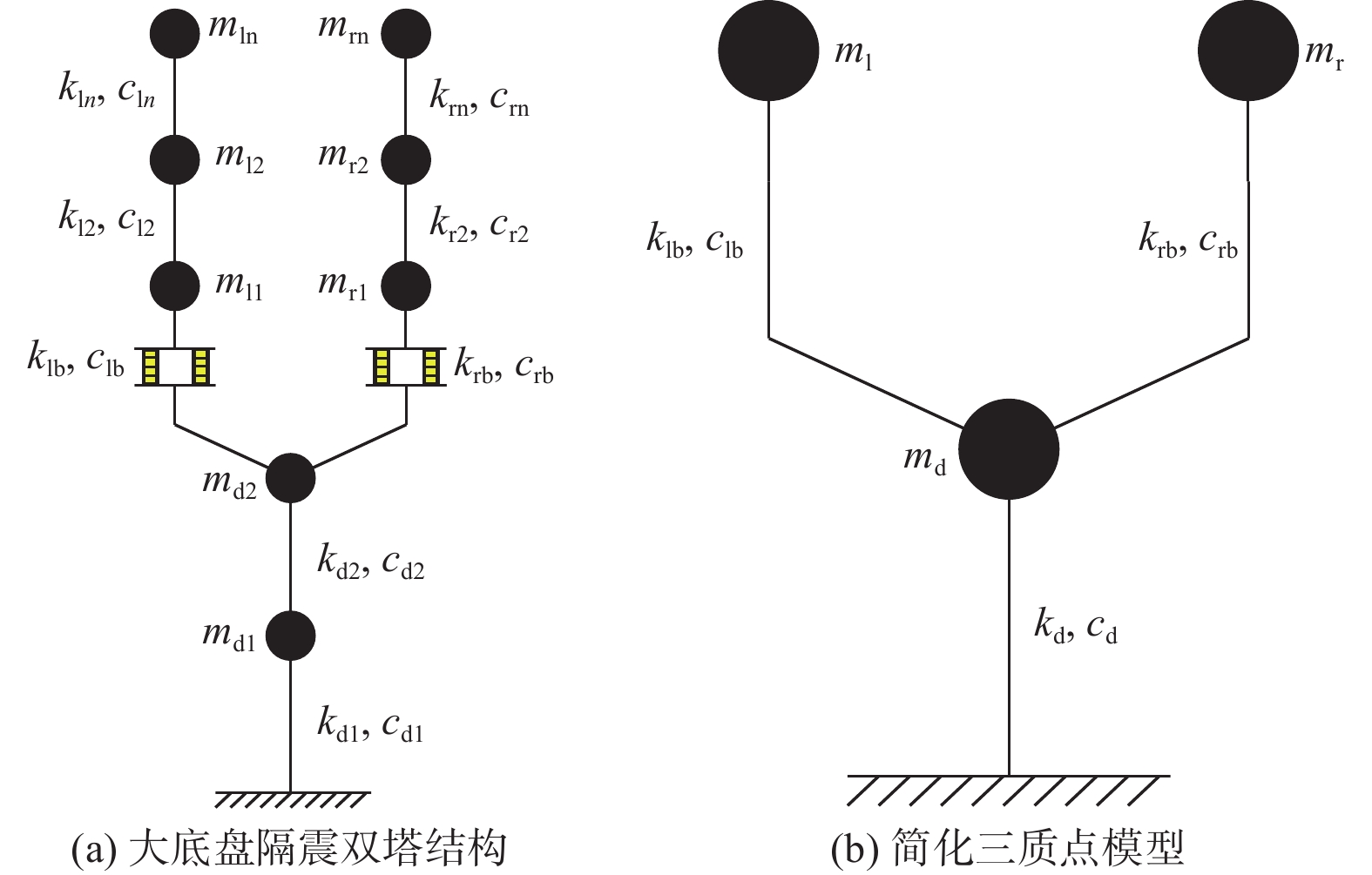
 下载:
下载:
